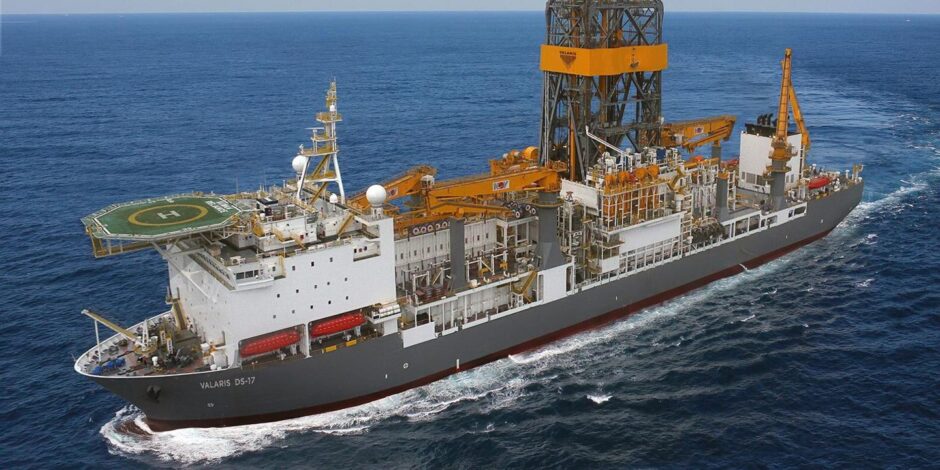
Exploration is not quite the dirty word it was in 2020-21, but appetite remains muted and highly selective.
“The era of peak global exploration spending appears to be behind us, as oil and gas industry redirect their capital away from traditional upstream activities towards a heightened emphasis on low-carbon and renewable sectors,” said Taiyab Zain Shariff, vice president upstream exploration for Rystad Energy.
Companies still open to exploration, he told Energy Voice, are likely to focus on low-cost and high-return assets, particularly with a fast route to monetisation. Furthermore, they will be working to focus on core areas, maturing already held acreage and relinquishing non-core or non-profitable assets.
“We have in recent years seen more focus rising towards [infrastructure-led exploration] ILX activities, especially now when all companies are quite cautions about their spending. Most top companies have also highlighted this as their main exploration strategy as well”, he said, citing the example of Eni and its gas plans.
Results from 2023 were not encouraging, a note from Rystad in late January said. Only eight of the 27 high-impact wells in 2023 commercial successes, a rate of less than 30%, below the annual average of 42%. Furthermore, the wells found 1 billion barrels of oil equivalent, down from the 3.5bn boe found in 2022.
Westwood Global Energy Group expects drilling activity this year to stay level from 2023. Using different metrics, Jamie Collard, Westwood’s wildcat exploration research manager, took a more downbeat view on plans this year.
A note from Westwood said high oil prices would normally feed through into higher exploration spending. “The link between oil prices and drilling that has held for many years may finally have been broken as companies balance their exploration ambitions against the pace of the energy transition,” Collard and co-author Andew Jackson wrote.
Hot spots
Rystad expects the industry to drill 36 high-impact wells in 2024. Of these, 13 are in Africa and 10 in Latin America.
Westwood expects 60-65 high-impact wells this year. It also expects companies to drill around one third of these wells in Africa, with the Orange Basin in the driving seat.
Some areas stand out for Shariff this year and into 2025. Namibia’s Orange Basin has become a particularly hot destination, with Galp recently finding oil, following on from TotalEnergies and Shell. The Rystad analyst noted the basin extended into South Africa, singling out TotalEnergies’ plans over the border.
Equinor plans to drill an exploration well on the Argerich prospect offshore Argentina this year, where no wells have yet been drilled. “If successful, the field is expected to host a production facility with capacity equivalent to 40% of the country’s current output,” Shariff said.
ExxonMobil plans a well in Angola’s Block 30 in the Namibe Basin, which may have similarities to Brazil’s Santos Basin.
Other areas of interest singled out by Rystad include India’s Andaman Basin, offshore Egypt in the Red Sea and deeper Nile Delta, Canada’s Orphan Basin and Brazil’s Foz do Amazonas. Westwood also noted a potential well by Exxon in Egypt’s Herodotus Basin.
Rig rates
The deepwater – and ultra-deepwater – offers the most frontier potential for explorers. However, dayrates have been climbing and, in some instances, have passed the $500,000 mark.
Shariff said this price pressure would continue this year amid tight rig markets. “We could expect operators to face growing challenge in securing available drill ships in coming time, which could weigh down or at least delay a few exploration projects.”
With little spare capacity, rig owners will need incentive to move ahead with costly reactivation work. This, the Rystad analyst said, would result in “longer lead times and higher day rates. Whereas the jack-up markets could see more stabilised markets as most of the NOCs sign in long term contracts.”
Cycle times
United Oil and Gas CEO Brian Larkin pointed to a shortfall in new material discoveries as likely to drive interest. “The supply of product is decreasing and demand is going up,” he told Energy Voice. “Companies with exploration in their portfolio should do well in the next cycle. Large caps are looking to deploy capital.”
United has recently exited Egypt and the UK North Sea. It is looking to secure a partner to fund work on a large exploration prospect offshore Jamaica.
The company’s exploration licence is “practically drill ready. It has a similar source rock to Guyana but is much cheaper to get in. Super majors and large caps want quick exploration opportunities.”
Larkin noted how discussions around exploration have changed in recent years, with many more factors weighing on decision-making. “20 years ago, exploration was just about finding barrels. One new thing that has an impact is the development concept. Our Jamaica concept is almost carbon neutral and that plays a significant part in plans. This is where we can evolve.”
Market demand
Expectations around dramatically reduced demand have dissipated. Rystad’s Shariff noted that exploration would be required “well past” peak oil demand. However, he said, “we could expect companies putting in more efforts on finding low carbon barrels and selecting only the best prospects to move ahead, which might see some reduction in exploration intensity”.
Oil and gas exploration are competing for capital within the energy industry, for instance against renewable projects. Energy companies are also competing for capital in the marketplace, though.
Larkin took a bullish tone. “We’ve been guilty of not delivering enough value”, he said, with energy losing out on key indices to hot topics such as technology and pharmaceuticals.
“But that’s starting to shift. People are recognising that oil plays a part – we still need it and we see investment growing in the sector.”
Exploration is far down the list for companies eager to please shareholders. Buybacks and dividends find favour, whereas spending millions of dollars on a wildcat frontier well is a harder sell.
However, with oil demand expected to reach 103 million barrels per day this year, companies must find new volumes.
Recommended for you

